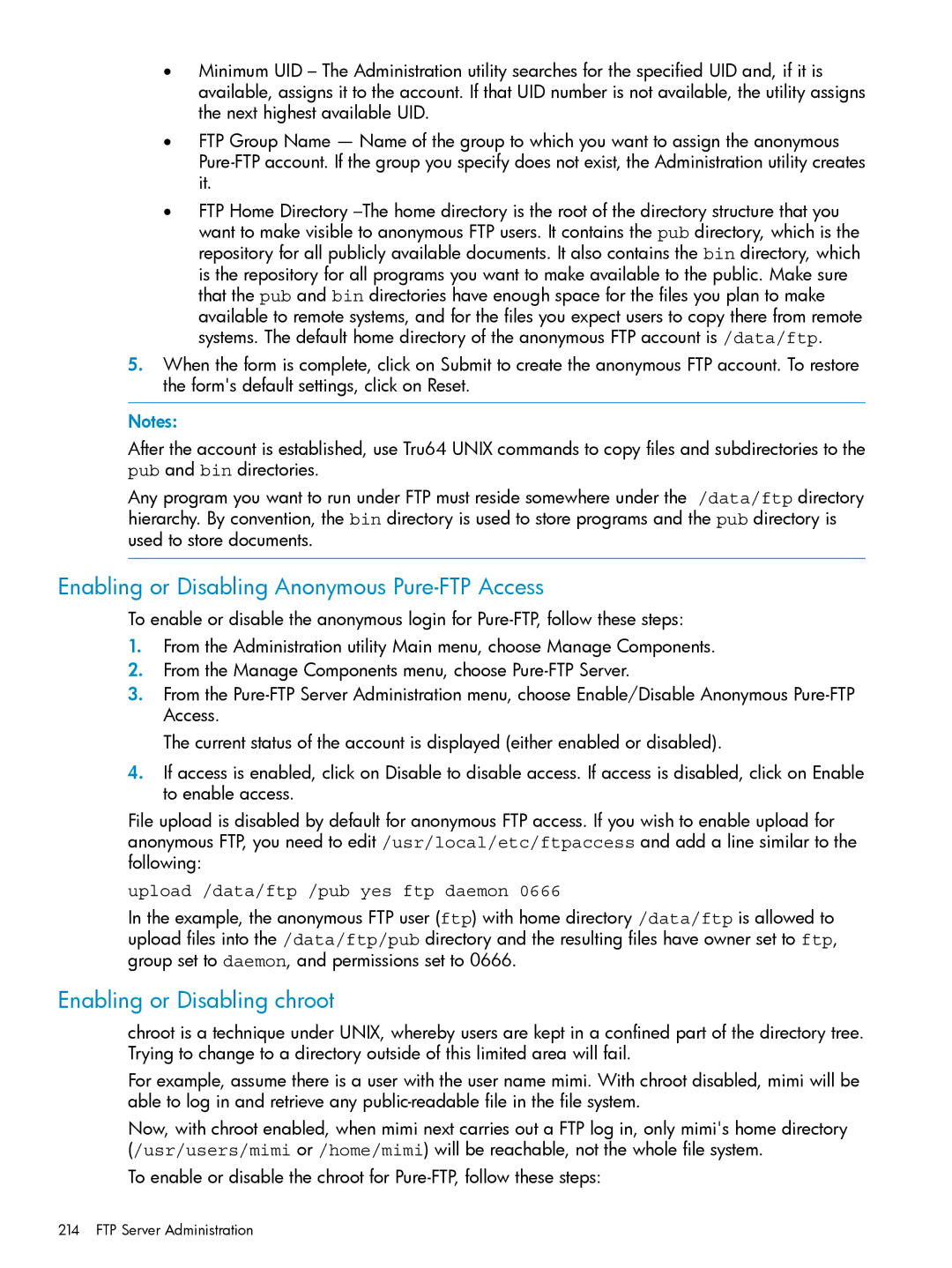
•Minimum UID – The Administration utility searches for the specified UID and, if it is available, assigns it to the account. If that UID number is not available, the utility assigns the next highest available UID.
•FTP Group Name — Name of the group to which you want to assign the anonymous
•FTP Home Directory
5.When the form is complete, click on Submit to create the anonymous FTP account. To restore the form's default settings, click on Reset.
Notes:
After the account is established, use Tru64 UNIX commands to copy files and subdirectories to the pub and bin directories.
Any program you want to run under FTP must reside somewhere under the /data/ftp directory hierarchy. By convention, the bin directory is used to store programs and the pub directory is used to store documents.
Enabling or Disabling Anonymous Pure-FTP Access
To enable or disable the anonymous login for
1.From the Administration utility Main menu, choose Manage Components.
2.From the Manage Components menu, choose
3.From the
The current status of the account is displayed (either enabled or disabled).
4.If access is enabled, click on Disable to disable access. If access is disabled, click on Enable to enable access.
File upload is disabled by default for anonymous FTP access. If you wish to enable upload for anonymous FTP, you need to edit /usr/local/etc/ftpaccess and add a line similar to the following:
upload /data/ftp /pub yes ftp daemon 0666
In the example, the anonymous FTP user (ftp) with home directory /data/ftp is allowed to upload files into the /data/ftp/pub directory and the resulting files have owner set to ftp, group set to daemon, and permissions set to 0666.
Enabling or Disabling chroot
chroot is a technique under UNIX, whereby users are kept in a confined part of the directory tree. Trying to change to a directory outside of this limited area will fail.
For example, assume there is a user with the user name mimi. With chroot disabled, mimi will be able to log in and retrieve any
Now, with chroot enabled, when mimi next carries out a FTP log in, only mimi's home directory (/usr/users/mimi or /home/mimi) will be reachable, not the whole file system.
To enable or disable the chroot for
